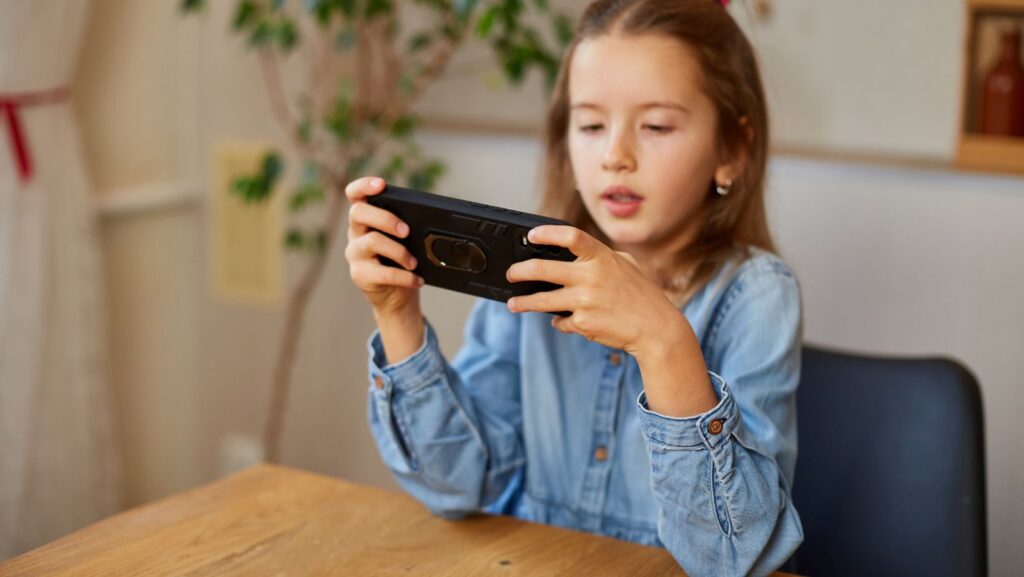In a world increasingly dominated by screens, parents often find themselves questioning the impact of digital exposure on their little ones. A recent study has shed new light on this issue, suggesting a connection between screen time for children under two and sensory differences in their toddler years.
This groundbreaking research explores the subtle yet significant implications of early screen exposure. It’s a topic that’s sparked a lively debate among experts and parents alike, and the findings could have profound effects on how we understand child development in the digital age.
So, if you’re a parent grappling with the ‘screen time’ conundrum, or simply someone interested in the intersection of technology and child development, this article promises to offer some insightful perspectives. Stay tuned as we delve into the details of this fascinating study.
Screen Time For Kids Under Age 2 Is Linked To Sensory Differences In Toddlerhood, New Study Finds
 The study found significant evidence pointing to a correlation between screen time for children under two and sensory differences in toddlerhood. Researchers observed that early exposure to screens contributes to notable differences in sensory processing and integration. Specifically, analysis indicated that children with frequent screen time exhibited heightened detection levels for vision and hearing, suggesting an altered sensory process.
The study found significant evidence pointing to a correlation between screen time for children under two and sensory differences in toddlerhood. Researchers observed that early exposure to screens contributes to notable differences in sensory processing and integration. Specifically, analysis indicated that children with frequent screen time exhibited heightened detection levels for vision and hearing, suggesting an altered sensory process.
In contrast, children who didn’t encounter screens as frequently showed a more typical sensory growth pattern. It’s important to note that the researchers didn’t label these sensory differences as definitively harmful or beneficial. Instead, they emphasized that it’s a substantial shift, paving the way for further study.
Methodology and Participant Demographics
The study adopted a rigorous approach, making use of an extensive and diverse participant group. It involved parents of approximately 2,500 toddlers aged between 12 and 18 months. These parents filled out surveys providing information on typical screen time frequencies for their children.
It’s worth mentioning that the researchers selected this cohort with care. They targeted a demographic mix, aiming to include varying socioeconomic backgrounds, geographies, and familial conditions in the sample set. The choice ensured that the study didn’t skew towards any one segment, lending credibility to this crucial research’s findings.
Through this study, it’s become evident that more research needs to go into understanding the impact of digital technology on child development. As it stands, this presents a leap forward in our comprehension of the sensory implications of early screen time.
The Impact of Screen Time on Toddler Sensory Development
Screen time, a paramount aspect of the digital age, leaves influences on toddlers, some easily perceivable, others subtle yet significant. As an increasing body of research directs attention to the implications of screen exposure on children under two years, findings indicating altered sensory development emerge. This in-depth examination focuses on the sensory differences and the role of screen time in shaping these distinctions.
Explaining Sensory Differences in Toddlerhood
Children in toddlerhood exhibit a wide range of sensory experiences, from vision and hearing to taste, touch, and smell. The way a child processes these experiences or sensations pertains to their sensory development. Distinctions in sensory processing manifest as differences in reaction or responses to sensory stimuli. For example, one child might be overly sensitive to loud sounds, while another might show low sensitivity to the same stimulus.
Interestingly, a recent study conducted on nearly 2,500 toddlers aged 12 to 18 months brought to light such sensory differences linked to screen time. The findings reveal children exposed to screens exhibit altered sensory processing, especially concerning vision and hearing.
How Screen Time Contributes to These Differences
 In unravelling the connection between screen time and sensory differences, research primarily spots the role of digital screens. Exposure to screens holds the potential to shape young children’s sensitivity to light and sound, tweaking their sensory development along the way.
In unravelling the connection between screen time and sensory differences, research primarily spots the role of digital screens. Exposure to screens holds the potential to shape young children’s sensitivity to light and sound, tweaking their sensory development along the way.
For visual stimuli, extended screen time denotes prolonged exposure to light emanating from electronic devices. It can alter a toddler’s light sensitivity, resulting in visual processing differences. Regarding auditory stimuli, the type and intensity of sounds emerging from digital screens may affect children’s hearing sensitivity.
Eventually, the cumulative screen time subtly influences sensory processing, driving sensory distinctions among toddlers. This understanding necessitates a broader perspective on screen time among children under two, linking it with essential facets of child development. By delineating this connection, the content ignites an enriching discourse among experts and parents, serving as a milestone towards devising healthier digital habits for the youngest demographic.
Alternative Activities to Screen Time
Instead of screen time, activities that encourage tactile and sensory exploration could be useful. Examples include play dough manipulation, touch-and-feel books, or sandbox play. These activities, examples of sensory play, enhance a toddler’s senses, unlike screen time, which predominantly engages vision and hearing only. Additionally, reading to children serves as an excellent alternative, nurturing language development and the child’s imagination.
For parents seeking to balance technology and sensory development, remember to prioritize interaction and engagement over passive screen use. By incorporating these recommendations into daily routines, parents can guide their child’s sensory development in a beneficial manner.

